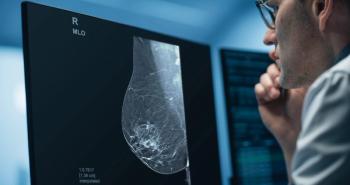
FDA Approves First 3-D Mammography Imaging System
Breast imaging has gone 3-D. The FDA announced today the approval of Hologic Inc.’s Selenia Dimensions System, the first X-ray mammography device that provides 3-D images for breast cancer screening and diagnosis.
Breast imaging has gone 3-D. The
“Physicians can now access this unique and innovative 3-D technology that could significantly enhance existing diagnosis and treatment approaches,” said Jeffrey Shuren, MD, JD, director of the FDA’s Center for Devices and Radiological Health.
The FDA reviewed results from two studies where radiologists reviewed 2-D and 3-D images from more than 300 mammography exams, according to the agency. Radiologists obtained a 7 percent improvement in their ability to distinguish between cancerous and noncancerous cases using the 3-D images, compared with 2-D.
“While the combination of the Selenia’s 2-D and 3-D images approximately doubled the radiation dose the patient received, it improved the accuracy with which radiologists detected cancers, decreasing the number of women recalled for a diagnostic workup,” the FDA said in a statement. “ There is uncertainty for radiation risk estimates; however, the increase in cancer risk from having both a 2-D and 3-D exam is expected to be less than 1.5 percent compared to the natural cancer incidence, and less than 1 percent compared to the risk from conventional 2-D mammography.”
Rob Cascella, Hologic’s president and CEO, said in a statement, "Our Dimensions 3-D takes advantage of all of the benefits of digital mammography and quite simply makes it better with the combination of fast, high quality 3-D breast imaging. We believe tomosynthesis has the potential to change how screening and diagnostic mammography is performed, and over time will prove invaluable to the earliest possible detection of breast cancer and in the reduction of unnecessary diagnostic interventions."
Newsletter
Stay at the forefront of radiology with the Diagnostic Imaging newsletter, delivering the latest news, clinical insights, and imaging advancements for today’s radiologists.




























